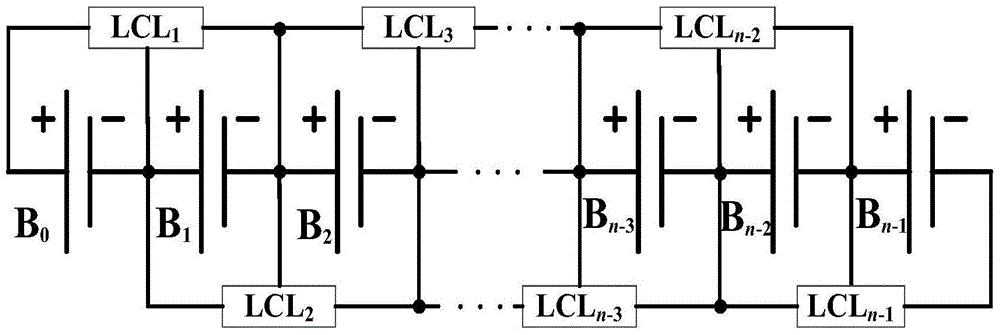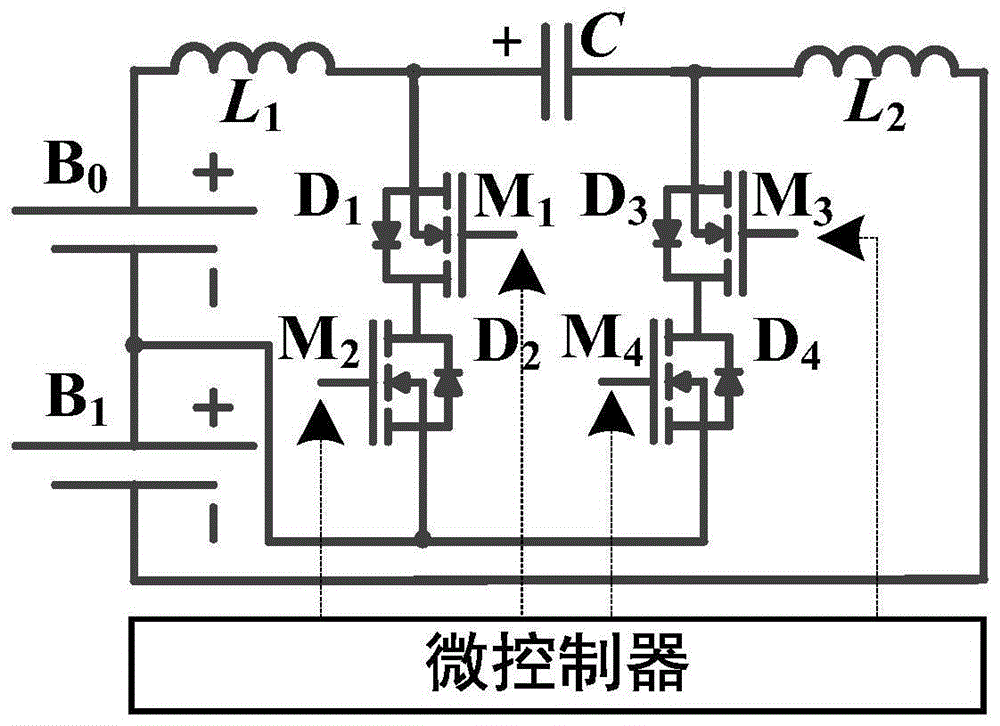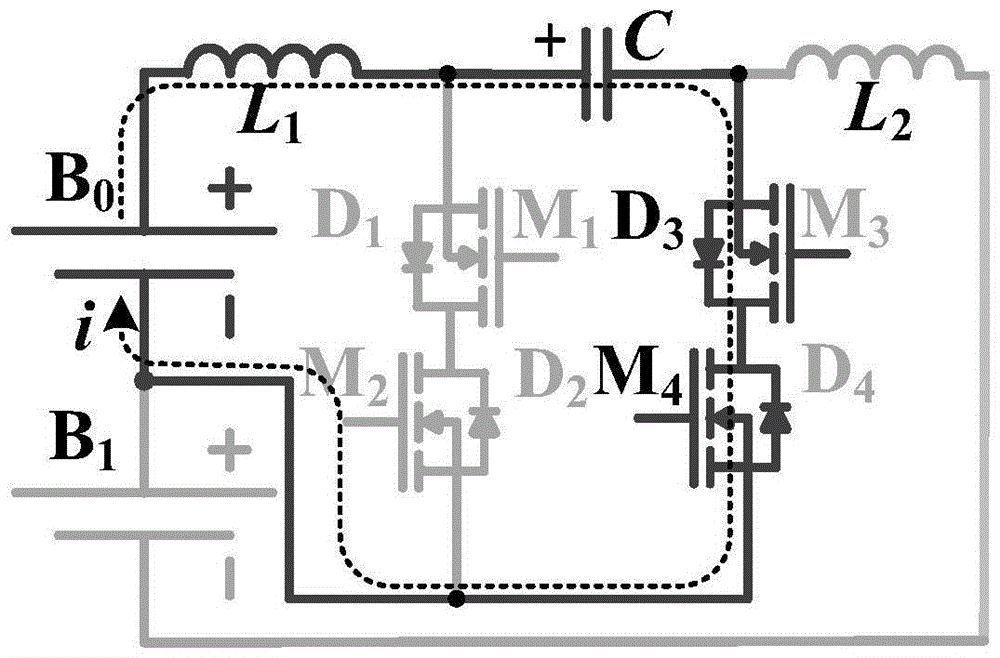Adjacent-cell-to-cell equalization circuit and implementation method based on lcl resonance conversion
A technology of resonant transformation and equalization circuit, applied in charge equalization circuits, circuit devices, battery circuit devices, etc., can solve the problem that switching loss cannot achieve zero voltage difference equalization, and achieve the effect of overcoming zero voltage difference and high equalization efficiency
- Summary
- Abstract
- Description
- Claims
- Application Information
AI Technical Summary
Problems solved by technology
Method used
Image
Examples
Embodiment
[0053] As shown in Figure 1, the microcontroller of the equalization circuit uses a digital signal processing chip DSP (TMS320F28335), which has high-precision AD sampling and PWM output; battery voltage. As shown in Figure 1(a), it is the overall model diagram of the LCL resonant module applied to the battery pack. Every two adjacent battery cells share an LCL resonant module. For a series battery pack composed of n battery cells, Shared to n-1 LCL resonant modules.
[0054] As shown in Figure 1(b), the LCL resonant module is applied to two adjacent battery cells B 0 and B 1 . The LCL resonant circuit consists of four MOS transistors M 1 -M 4 , four diodes D 1 -D 4 , two inductors L 1 , L 2 and a capacitor C. Among them, M 2 , M 4 source, D 2 、D 4 The positive pole is connected with B respectively 0 negative electrode (B 1 The positive pole) is connected; the inductance L 1 with B 0 connected to the positive pole, L 2 with B 1 connected to the negative pol...
PUM
 Login to View More
Login to View More Abstract
Description
Claims
Application Information
 Login to View More
Login to View More - R&D
- Intellectual Property
- Life Sciences
- Materials
- Tech Scout
- Unparalleled Data Quality
- Higher Quality Content
- 60% Fewer Hallucinations
Browse by: Latest US Patents, China's latest patents, Technical Efficacy Thesaurus, Application Domain, Technology Topic, Popular Technical Reports.
© 2025 PatSnap. All rights reserved.Legal|Privacy policy|Modern Slavery Act Transparency Statement|Sitemap|About US| Contact US: help@patsnap.com



